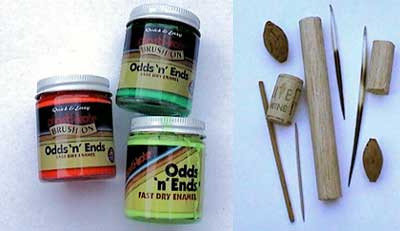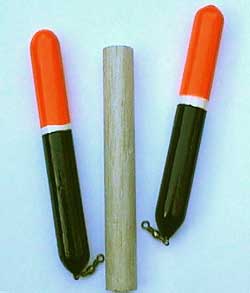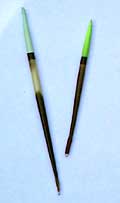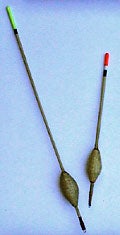Tackle making seems to be something of a lost art in today’s modern throwaway society. A mere twenty years ago it was considered quite normal to make up a batch of hooklinks or floats during the close season. In the FISHINGmagic forums a number of people have asked about making floats. With this in mind I have written this article and a series of practical ‘workshops’ about my return to the simple pleasure of making floats. A couple of years ago my son suddenly showed an interest in fishing. So, it was off to the tackle shop to stock up on few extras, floats of course being high on the list. I was amazed at the relatively high price being asked for most floats but I still bought a small selection of wagglers.
The first time I used a particular self-cocking float disaster struck. A barge went past rather erratically – the gentleman in charge was possibly drunk as he hit a bridge no less than five times before he managed to negotiate his way through. He also managed to catch my line and took the float and end tackle with him. I might just as well have chucked a couple of pound coins in the canal. This was the catalyst I needed. I could make floats just as good, if not better, and for a fraction of the price. As a growing number of FISHINGmagic members have found, like myself, float making materials are not all that easy to come by. When I first started fishing twenty eight years ago nearly every tackle shop held stocks of sarcandas reed; peacock and porcupine quills together with cork or balsa, oval shaped float bodies. First stop my local tackle shop. No luck at all. Yes they remembered these items being available but not anymore and no idea of where I might get them. I then tried a local model making shop. Success! Balsa dowel in a multitude of different widths. Ideal for anything from pike floats to slim bodied, but buoyant, wagglers. Shape a piece of balsa into a rugby ball shape and use a cane barbecue skewer for the stem and you have a perfect wind beating bodied waggler or Avon. Quite by accident, whilst browsing the internet, I found a source of porcupine quills. These are available from a gentleman by the name of Dave Havers at www.tacklebargains.co.uk. Porcupine quills are no longer legally able to be imported into this country so this is a finite resource and I don’t know what sort of stocks Dave has. Another source of quills is by looking for discarded wing feathers from geese or swans at the water’s edge. Be choosy though. Any that have been lying on the bank or in the water for a length of time deteriorate and are useless for float making. One last material that I have used successfully for my floats is a touch ‘Blue Peterish’. Discarded, children’s felt pens. They make a great, cheap and exceptionally buoyant waggler style float which I have found is ideal for big meat or paste baits for carp.
The pictures here show the results of my efforts. Over the next few weeks I shall show, in detail, exactly how I made the various floats. Use your imagination and they could be tailored to suit you own fishing. Lengths can be varied, colours changed, sight tips can be added for extra visibility for longer distance fishing. The art of float making is definitely not dead and after all, Pete Drennan started out by making his own. |
Welcome!Log into your account














